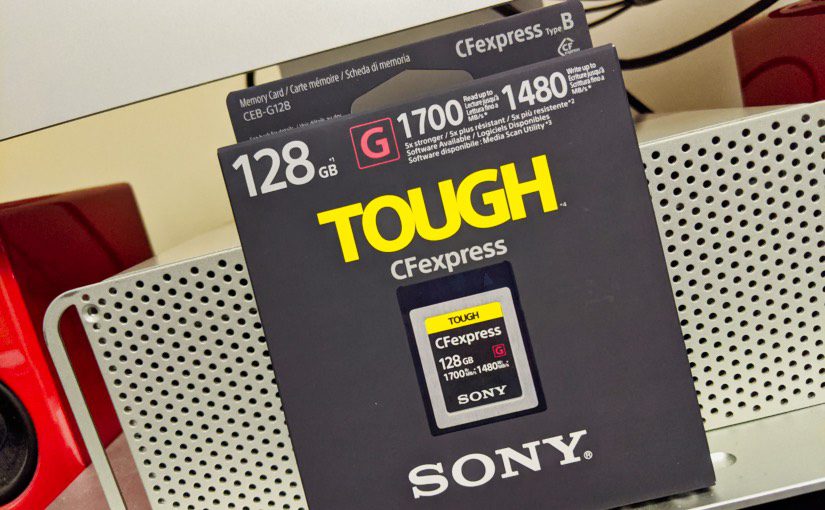I purchased my Nikon Z-6 in November 2019, and in hindsight I wished I’d pulled the trigger sooner. It’s had a marked improvement on my photography, namely due to the in-body image stabilization. To be blunt, it was a technology I needed for quite some time* as I usually shoot with prime lenses that lack stabilization. I was exceedingly grumpy with Nikon for not following Sony, Panasonic, and every other camera OEM’s lead (other than Canon) but I bought the non-stabilized D750 anyway. I swore though my next camera would have it. <shakes fist at sky>
This isn’t a review of the Nikon Z-6 though. What’s that? You want my review of the Z-6? It’s great, though I wish it had two memory cards slots instead of one QXD card slot. Buy it if you have an investment in Nikon lenses. If you don’t, look really hard at the Sony Alpha a7 III. I’d have probably gone with the Sony if I didn’t have my Nikkor f/2.8 lenses; I just can’t justify replacing them with equivalent Sony lenses. 💸
Back to cards: I bought my Z-6 with a 32 GB Sony QXD card. It came in a bundle, and 32 GB (which stores 608 photos) was good enough for my immediate needs. I knew I’d need a bigger card soon though as I have my annual “take a whole heap of photos of my son’s school musical” coming up. I knew Nikon was going to release a firmware update to enable support for CFexpress cards (read about CFexpress vs. QXD here), so I didn’t want to invest any more money in the QXD format since it’s being eclipsed by a superior format that offers 1700 MB/s read speeds and 1480 MB/s write speeds. Compared to what QXD offers – 440 MB/s read and 400 MB/s write – the difference is stark (and all about those PCI express lanes).
The new card is much faster on paper, but how does that impact the still photography experience?
To test the speed, I did a simple test three times: I pointed my camera at the same subject, set it to manual (f/1.8, 1/60th, auto ISO), continuous high speed extended mode, and mashed the shutter button. RAT-TAT-TAT-TAT-TAT-TAT! 12 frames per second sounds like a machine gun.
With the Sony 32 GB QXD card, I was able to shoot an average of 39 frames before the camera stopped me from taking another. The read/write light on the camera went out after no more than three seconds, so the buffer was cleared quickly.
With the Sony 128GB CFexpress card, I took an average of 38 photos before the camera stopped. Basically the same as the QXD card once you factor in the margin of error. 🤔The buffer cleared just as fast.
Surprised? I was – a little – until I started looking at the math. The raw files on the Z-6 are about 30 MB in size. So at 12 images per second, that’s around 360 MB/s of data per second (give or take with overhead). The 400MB/s write speed of QXD cards is sufficient to keep up with the pace of the Z-6 shooting still images. I’m not enough of a video shooter to know if 12-bit uncompressed raw video can push QXD past its speed limits. 🤷🏻♂️
So from the perspective of CFexpress making my stills shooting experience any better, it won’t. So why am I still happy** I bought it?
Here’s why: the Sony 128 GB will allow me to capture ~2500 images, and I paid $220 for it. I’m confident in saying I will unlikely ever need to capture more than 2500 images in a single shoot; this should be the biggest card I’ll need for the life of this camera. The closest Sony QXD card is 120GB and costs $198. So for $22 more, I’m getting 8 GB more storage and a format that is speed-future-proofed for whatever improvements Nikon can continue to make via firmware.
CFexpress is the future, QXD is the past, and unless you already have QXD cards large enough for your needs, CFexpress is what you should buy next.
* In college I infamous for my shaky broadcast shoulder-camera work…so much so I was dubbed the president of “Off The Shoulder” productions because the footage I captured wasn’t very solid. 😜
** The most unhappy part of the experience is that the QXD desktop card reader I bought – a cheapie for $20 off Amazon – isn’t compatible with the new CFexpress card. I figured since they were physically compatible it would just work, but it just…didn’t. 🤣 The Sony CFexpress readers aren’t available yet, and I’m not spending $150 on the only reader that is available. I’ll use the QXD card day to day and keep the CFexpress card for the big photo shoots until more card readers are available.
